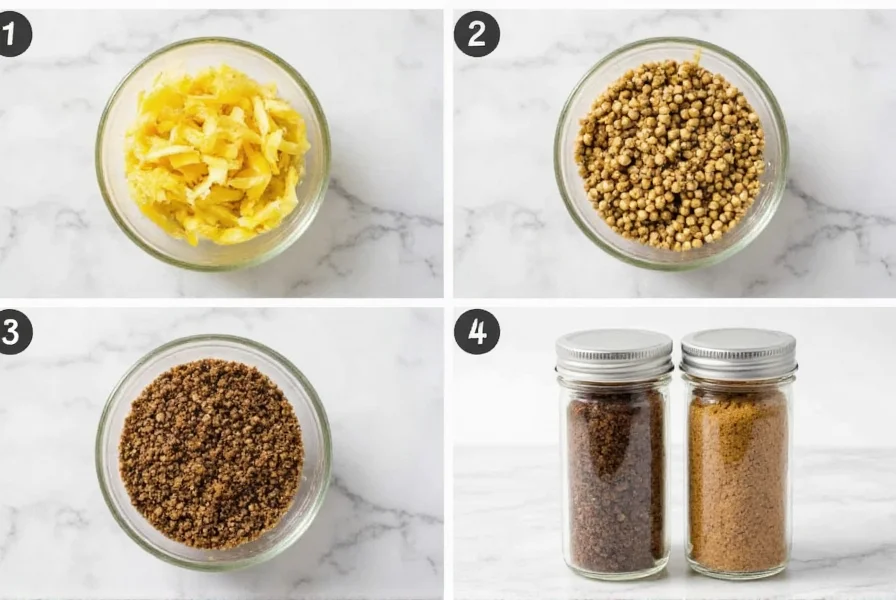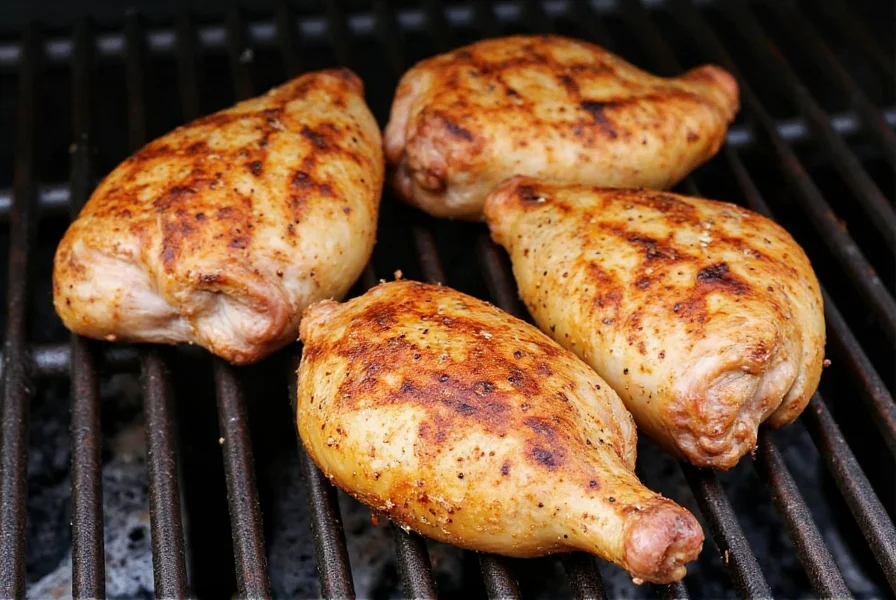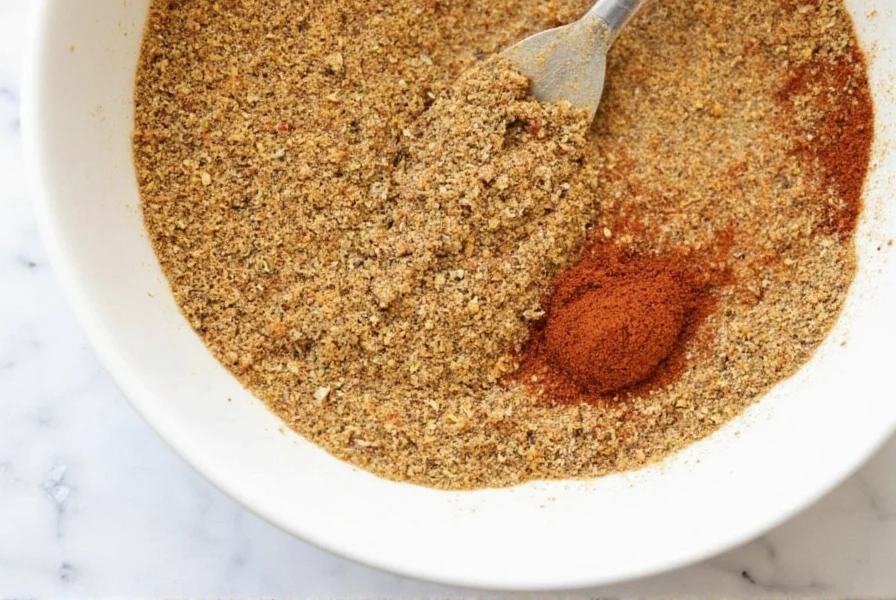Lemon pepper spice rub has become a staple in modern kitchens for its versatility and ability to transform simple ingredients into restaurant-quality dishes. Understanding the proper formulation and application techniques makes all the difference between a flavorful masterpiece and a culinary disappointment.
What Defines a Quality Lemon Pepper Spice Rub
The distinction between an ordinary seasoning and an exceptional spice rub lies in ingredient quality and composition. Authentic lemon pepper spice rub contains:
- Freshly dried lemon zest (not artificial flavoring)
- Coarsely cracked black peppercorns (not fine powder)
- Complementary spices like garlic powder, onion powder, and salt
- Optional enhancements such as coriander, thyme, or smoked paprika
Commercial blends often contain fillers like maltodextrin or anti-caking agents that compromise flavor intensity. The best homemade lemon pepper spice rub recipe uses a 3:2:1 ratio of lemon zest to black pepper to supporting spices for balanced flavor without overwhelming any single component.
| Ingredient | Quality Indicator | Common Pitfalls |
|---|---|---|
| Lemon zest | Bright yellow color, citrus aroma | Brown discoloration, musty smell |
| Black pepper | Visible cracked pieces, pungent scent | Fine powder, weak aroma |
| Supporting spices | Fresh appearance, vibrant color | Dull color, stale smell |
Creating the Perfect Homemade Lemon Pepper Spice Rub
Producing your own lemon pepper spice rub ensures maximum freshness and customization. Follow this professional chef-approved method for consistent results:
Basic Homemade Lemon Pepper Spice Rub Recipe
Makes approximately ½ cup of spice rub
- 2 tablespoons fresh lemon zest (dried)
- 1½ tablespoons coarsely cracked black peppercorns
- 1 tablespoon fine sea salt
- 2 teaspoons garlic powder
- 1 teaspoon onion powder
- ½ teaspoon dried thyme (optional)
- ¼ teaspoon coriander (optional)
Preparation:
- Dry lemon zest by spreading on parchment paper for 24 hours at room temperature
- Crack peppercorns using a mortar and pestle or spice grinder (pulse only)
- Combine all ingredients in an airtight container
- Shake vigorously for 30 seconds to blend thoroughly
- Store in a cool, dark place for up to 3 months

Optimal Applications for Lemon Pepper Spice Rub
Understanding how to properly apply lemon pepper spice rub determines cooking success. Different proteins and vegetables require specific techniques:
Protein Pairings and Application Methods
- Chicken: Apply generously under and over skin before roasting; use 1 tablespoon per pound
- Fish: Press lightly onto skinless fillets 15 minutes before cooking to prevent burning
- Shrimp: Toss with rub and olive oil before skewering for grilling
- Pork: Massage into chops or tenderloin, allowing 30 minutes to absorb flavors
- Vegetables: Toss root vegetables with minimal oil and rub before roasting
For best results when using lemon pepper rub for chicken, apply the mixture under the skin to protect the lemon zest from burning while allowing flavors to penetrate the meat. The salt in the rub helps draw out moisture initially, then facilitates browning through the Maillard reaction.
Professional Tips for Maximum Flavor Impact
Seasoned chefs employ these techniques to maximize the potential of lemon pepper spice rub:
- Timing matters: Apply dry rubs 15-30 minutes before cooking proteins, but up to 24 hours in advance for larger cuts
- Oil judiciously: Use minimal oil only when grilling to prevent burning of citrus components
- Layer flavors: Combine with fresh herbs during cooking for complex flavor profiles
- Temperature control: Cook at medium-high heat to develop crust without burning delicate lemon zest
- Finishing touch: Add fresh lemon juice after cooking to brighten flavors

Common Lemon Pepper Spice Rub Mistakes to Avoid
Even experienced cooks make these errors when working with lemon pepper seasoning from scratch:
- Over-application: Too much rub creates an overwhelming flavor and prevents proper browning
- Using fresh lemon juice in the rub: Causes burning during high-heat cooking
- Applying too late: Insufficient time for flavors to penetrate the food surface
- Storing improperly: Exposure to light and moisture degrades citrus components rapidly
- Mixing with wet ingredients first: Creates a paste that steams rather than sears food
When grilling with lemon pepper spice rub, remember that the citrus elements burn more quickly than other spices. Maintain consistent grill temperature between 375-400°F and watch carefully during the final cooking stages.
Frequently Asked Questions
Can I use lemon pepper spice rub on steak?
Yes, but use sparingly on high-quality cuts like ribeye or filet mignon. The citrus elements can overpower delicate beef flavors, so apply a light coating and consider adding the rub during the last few minutes of cooking rather than at the beginning.
How long does homemade lemon pepper spice rub last?
Properly stored in an airtight container away from light and moisture, homemade lemon pepper spice rub maintains optimal flavor for 2-3 months. The lemon zest begins to lose potency after this period, though the mixture remains safe to consume for up to 6 months.
What's the difference between lemon pepper seasoning and spice rub?
Lemon pepper seasoning typically contains oil and has a finer consistency for sprinkling, while a spice rub features coarser ingredients without oil, designed to adhere to food surfaces and create a flavorful crust during cooking. Rubs generally contain less salt and more complementary spices than standard seasonings.
Can I make lemon pepper spice rub without salt?
Absolutely. Omit the salt for a sodium-free version, but recognize that salt helps the rub adhere to food and enhances overall flavor perception. If avoiding salt, increase the supporting spices slightly and consider adding a small amount of mushroom powder for umami depth.
Why does my lemon pepper rub burn during cooking?
Lemon zest contains natural sugars that caramelize quickly at high temperatures. To prevent burning, reduce cooking temperature slightly, apply a thinner layer of rub, or add the rub during the final 5-10 minutes of cooking rather than at the beginning, especially when grilling or searing.











 浙公网安备
33010002000092号
浙公网安备
33010002000092号 浙B2-20120091-4
浙B2-20120091-4